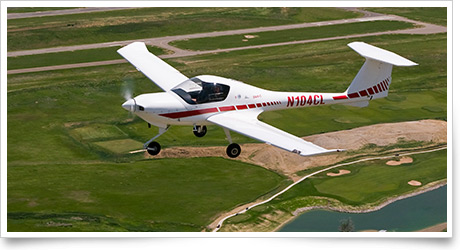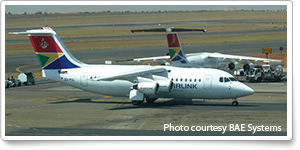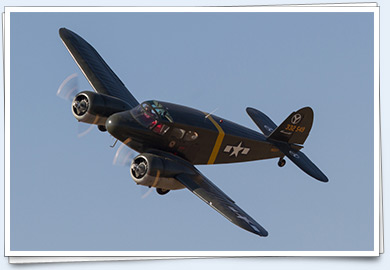Mar. 8, 2013, issue of 'AOPA ePilot: Flight Training Edition' weekly newsletter
| ||||||
| Multiple-TPA airports |
| |||||
Training TipsMultiple-TPA airports
A small but important detail of an airport’s listed information is its traffic pattern altitude (TPA), which will be your target altitude for leveling off after the descent from cruise on arrival.
Check that TPA! Don’t assume that the destination’s pattern altitude follows the rule of thumb given in Chapter 7 of the Airplane Flying Handbook, that a TPA is “usually 1,000 feet above the elevation of the airport surface. The use of a common altitude at a given airport is the key factor in minimizing the risk of collisions at airports without operating control towers.” (That guidance is also useful in the event that a destination does not have a published TPA.)
If an airport’s TPA is lower than usual, check the surrounding area on the sectional chart. Traffic flows to and from another airport nearby might be a factor, as is the case at Maine’s Brewer Airport (which also has right traffic to one of its runways).
Sometimes when checking the airport/facility directory for the TPA of an airport used by large and small aircraft, you may see not an altitude, but a comment such as “TPA—See Remarks.”
Be sure to do so. You may find a note like this in the remarks: “TPA for turbo jet acft is 2000 (1808) unless otherwise instructed.”
You won’t show up in a jet, but if you are flying the downwind leg of your pattern (at the standard 1,000 feet above airport elevation), and a jet is flying one too, knowing its altitude will help you spot it when traffic is called out, and—more important—will help you plan your wake-turbulence avoidance strategy.
Landing at an unfamiliar airport requires extra focus on technique even without the added challenge of taking on an atypical TPA. So don’t hesitate to go around if the combined effect leaves you unsatisfied with how your approach is unfolding.
More likely, by following the methods you have learned, you will carry off an arrival that will confirm your skills and raise your confidence.
CLARIFICATION: The March 1 “Training Tip: Painting the stripe” inconsistently described the results of a landing error by a pilot seated in a trainer’s left seat. The pilot in the left seat who aims at the centerline over the middle of the aircraft’s nose will tend to touch down left of the centerline. Flight Training NewsSequester is upon us, and still few detailsThe sequester took effect March 1 and few details are available about precisely what that means for general aviation. Unfortunately, even the people who make those decisions still aren’t entirely clear on what happens now. What one can say for certain is that if full sequestration takes effect there will be cuts to services and it will take weeks to determine the exact impact. Read more >> Technique: Remedial landing schoolThe V-tail Bonanza pilot approached Camarillo, Calif., leveled 20 feet above the runway, and raised the nose. Perhaps the goal was to make the first turnoff, and it was a success, but the airplane couldn’t taxi afterward—it was damaged. The aircraft stalled from six feet and landed on its propeller. There was a similar problem at a flight school in Frederick, Md. One renter tried—and failed, thanks to his instructor—to do the same thing at 100 feet. The instructor intervened as the airspeed dropped from 65 knots to 50 knots. No one knows what either pilot was thinking. Read more >> Instructor unveils pilot training management systemRobert Barnes, president of the International Association of Flight Training Professionals (IAFTP), says graduating from a flight training program doesn’t necessarily equate to a true level of competence. He presented a paper at the recent Association of Southeast Asian Nations Aviation Training & Education Summit in Indonesia, where he explained “how a training management system created by Talon Systems and the IAFTP is being used to ensure basic pilot competence at the Saudi Aviation Flight Academy (SAFA),” reports AIN Online. ERAU receives Level D regional jet simulatorEmbry-Riddle Aeronautical University’s Daytona Beach, Fla., campus has acquired a Level D full-flight simulator from FlightSafety International. The CRJ-200 Level D simulator, scheduled to arrive this summer, will allow students to train safely for operations in realistic, difficult conditions. It will be installed at the university’s Advanced Flight Simulation Center. New training center to open at Alabama’s Callahan AirportAlabama’s Baldwin County has announced the creation of a $2.5 million aviation training center based at the H.L. “Sonny” Callahan Airport. The new 15,000-square-foot facility, which opens in January, will help preparatory and college students to pursue aviation careers. The center is a partnership between Faulkner State Community College, Enterprise State, the Fairhope Airport Authority, and the Baldwin County Board of Education. UND offers bizav concentrationStudents attending the University of North Dakota’s John D. Odegard School of Aerospace Sciences will now be able to add a concentration in business aviation, reports Flying, after a school survey found more wanted to pursue careers in that segment of the industry. Students will be able to complete 16 hours in courses including fleet planning, aircraft acquisition, insurance, accounting, and entrepreneurial skills. The courses will begin in fall 2013. Spring forwardFor those living in states that observe daylight saving time, remember to set the clocks forward (yes, the one on your aircraft too) on Sunday, March 10. Also remember to switch to daylight saving time when converting to or from Coordinated Universal Time (Zulu) during your flight planning. Knowledge—the best insuranceWhether on a local flight to and from the practice area with your instructor, a quick hop to a nearby airport for touch and goes, or that first solo cross-country flight, the local airspace should always be on a pilot’s mind. Learn more about our nation’s skies by taking the Air Safety Institute’s Know Before You Go online course. Take the course >> Propeller safety 101During preflight you should inspect your aircraft’s propeller blades, but do you really understand what you’re looking for and why? It is important to maintain your aircraft’s propeller. Download Propeller Safety, published by the Air Safety Institute, to discover more. The Safety Advisor is chock-full of maintenance tips, preflight considerations, and other things to look out for in order to have a safe flight. Read more >> Training Resources
Airshow season is coming up! And you don’t need to miss out on the fun just because you’re a student pilot. Ask your flight instructor if you could visit a fly-in, airshow, or pancake breakfast as part of your cross-country training. You’ll get real-world experience on how to watch for traffic during your approach to the airport as well as exposure to safe ground operations. See the Air Safety Institute’s special fly-in resources page for additional information.
Did you know that student pilots who join AOPA are three times more likely to complete their flight training? Membership includes unlimited access to aviation information by phone (800/USA-AOPA, weekdays from 8:30 a.m. to 8 p.m. Eastern time) or from Flight Training Online or AOPA Online. If you’re not already a member, join today and get the pilot’s edge. Login information is available online. Fuller interview, ‘Top Gun’ stunt pilotHear AOPA President Craig Fuller discuss his decision to step down. And before he became a commander on the space shuttle, Scott Altman was one of four stunt pilots used in the movie Top Gun. AOPA Live® talks with him about that experience. Watch AOPA Live >> Career PilotU.S. airlines report improved performance, small profitAirlines for America, an airline industry trade organization, reported Feb. 21 that “U.S. airlines delivered one of their best years ever for operational performance, built on their stellar safety record, and achieved a narrow profit as expenses grew faster than revenues for the second consecutive year.” According to the Department of Transportation’s Air Travel Consumer Report, the nation’s carriers achieved the best year for on-time arrivals since 2003 and the lowest cancellation rate since 2002. “The 10 U.S. airlines reporting full-year 2012 results to date earned a combined $152 million or 21 cents of net profit for every passenger enplaned. Earnings fell as expenses rose 4.7 percent, outpacing a 4.5-percent revenue increase,” the group said. United launching seasonal service from NewarkUnited Airlines announced Feb. 25 that it will offer summer-season service from Newark Liberty International Airport to Anchorage, Alaska, and Traverse City, Mich. United will operate Boeing 757s for the Anchorage service on Saturdays from July 6 through Aug. 31. United Express will handle service to Traverse City on weekends from July 5 through Aug. 25 with ExpressJet aircraft.
For more aviation career news, see the Flight Training website. Plane SpotterFour fans, to go Training ProductsGleim private, recreational pilot study guideGleim has made available the Private Pilot and Recreational Pilot FAA Written Exam as a book or audio CD. The book was designed to provide student pilots with the easiest, fastest, and least expensive means of passing the FAA Private Pilot - Airplane knowledge test. The book is $19.95; the CD is $54.95. ‘Flying the Weather Map’Written by Richard L. Collins for pilots who want to improve their flight weather forecasting skills, Flying the Weather Map provides an in-depth discussion of the basic theory and logic of aviation weathercasting and an analysis of 46 instrument flight rules (IFR) cross-country flights made in a light airplane in all seasons. Each flight episode is illustrated with pre-takeoff, upper-level, and surface weather maps and a small-scale chart, which clearly traces the progress of the flight and the actual in-flight weather conditions.
Note: Products listed have not been evaluated by ePilot editors unless otherwise noted. AOPA assumes no responsibility for products or services listed or for claims or actions by manufacturers or vendors. Member BenefitsCan I fly after a stroke?The three terms one hears when dealing with a “stroke” are cerebrovascular accident, stroke, and transient ischemic attack (“TIA”). A stroke happens to be one of the FAA’s “specifically disqualifying conditions.” This means that if you go in for a flight examination and you had a stroke or TIA, the aviation medical examiner may not issue you a medical certificate without obtaining written or verbal permission from an FAA physician. Read more >> BlogsExemption 3585If the airlines stayed on the ground every time the weather was less than ideal, they’d never fly. As a result, technology and rules are in place to maximize efficiency and opportunity while minimizing risks. One example lies in getting airplanes off the gate when the weather at the destination is forecast to be below minimums. Read more >> Rotor RPMMain rotor RPM is like airspeed to an airplane. It creates the airflow over the blades that produce lift. A rotor blade is a rotating airfoil that experiences a much higher airflow over the blade tips than the inboard areas. In order to improve the distribution of lift across the blades, engineers twist the blade so that the inboard part has a higher angle of attack for a given pitch angle. At a constant pitch angle, changing the RPM will vary the lift. However, in helicopter rotor design the main rotor RPM is a fixed value and lift is changed by varying the angle of attack by changing the blade’s pitch angle. Read more >> AOPA Career OpportunitiesEver dream of turning your passion for aviation into a career? We’re looking for a director, financial planning and analysis; office services supervisor; credit analyst; major gifts officer; and director of outreach and events. To learn more about other AOPA career opportunities, visit AOPA Online. Community
AVIATION EVENTS & WEATHER
| ||||||||||||||||||||||||||||||||||||




 Flying to a new cross-country destination is as much a planning exercise as a flight mission. It’s necessary to become thoroughly familiar with such facts as the class of airspace you will enter, runway lengths and bearings, communications frequencies, and the taxi routes to follow when you get on the ground.
Flying to a new cross-country destination is as much a planning exercise as a flight mission. It’s necessary to become thoroughly familiar with such facts as the class of airspace you will enter, runway lengths and bearings, communications frequencies, and the taxi routes to follow when you get on the ground.



